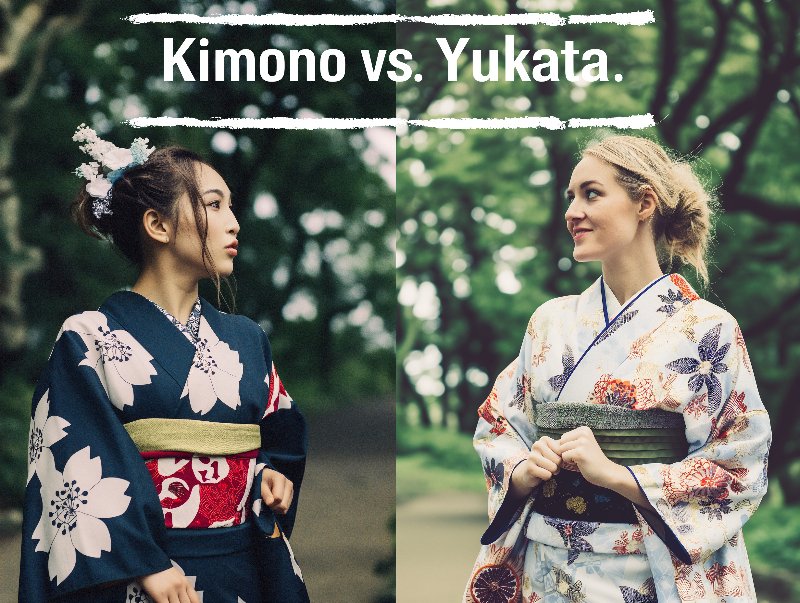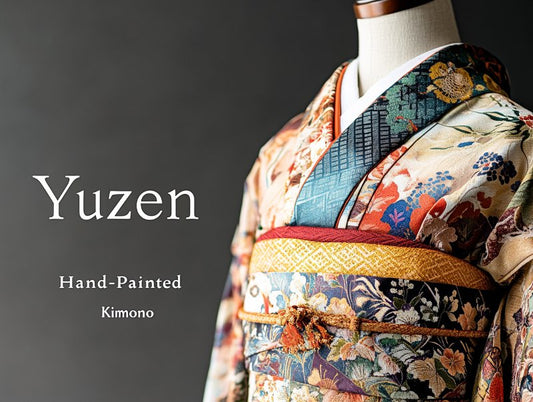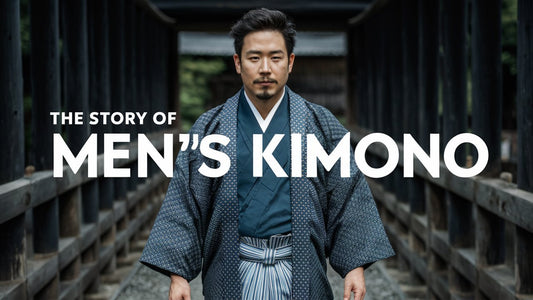
Kimono vs. Yukata : What is the difference?
Aktie
The Japanese kimono and yukata stand as cultural symbols, revered for their beauty, history, and significance. These traditional garments embody the grace of Japanese tradition, each telling its own story through patterns, fabrics, and occasions for wear. While at first glance they may appear similar to the uninitiated eye, the kimono and yukata have distinct characteristics that set them apart. This article dives into the nuanced differences between these traditional garments, highlighting their unique places in Japanese culture and modern luxury.
Understanding the Kimono: A Symbol of Formality and Tradition
The Fabric and Design
The kimono, which literally translates to "thing to wear," is a traditional Japanese garment known for its long sleeves and wrap-around design. It is made from luxurious fabrics like silk, satin, or brocade, making it a symbol of sophistication and status. The complexity of a kimono's design, with its layers and accessories, reflects the wearer's taste and social standing. Traditional motifs, seasonal patterns, and auspicious symbols adorn these garments, each carefully chosen to reflect the occasion, season, or the wearer’s age and marital status.

Occasions for Wearing Kimono
Kimonos are worn during formal events such as weddings, tea ceremonies, and coming-of-age ceremonies (Seijin Shiki). The garment's formality is determined by its color, pattern, and how it is worn. A black kimono with a family crest (kamon) is considered the most formal, typically worn by family matriarchs, while younger women's formal kimonos often feature elaborate designs and vibrant colors.
Embracing the Yukata: The Casual Breath of Summer
The Fabric and Design
Yukata, in contrast, are made from cotton or synthetic fabrics, making them lighter, more breathable, and less formal than their silk counterparts. Originally intended as a bathrobe or loungewear after onsen (hot spring) baths, the yukata has evolved into a popular choice for summer festivals (matsuri) and fireworks (hanabi) events. The designs are simpler and more playful, often featuring floral patterns, and the yukata is worn with a simple obi (belt) without the need for additional accessories.

Occasions for Wearing Yukata
The yukata is synonymous with the vibrancy of summer in Japan. It is the preferred attire at summer events, where its light fabric and casual elegance perfectly match the festive atmosphere. From Bon dances to fireworks displays, the yukata adds a touch of tradition to these seasonal celebrations.
The Ritual of Dressing: Kimono vs. Yukata
Dressing in a kimono is an art form, requiring skill and often assistance due to its complexity. A full kimono ensemble includes an undergarment (nagajuban), the kimono itself, several sashes (obi), and various small accessories for adjustment and decoration. In contrast, the yukata is much simpler to wear, often requiring only a single obi and minimal accessories, making it a more accessible option for those new to Japanese traditional wear.
Kimono and Yukata in Modern Luxury and Fashion
As ambassadors of Japanese tradition, both kimono and yukata have found their place in the realm of modern luxury. Designers and brands, like KimonoKoi.com, innovatively blend traditional motifs with contemporary fashion trends, making these garments not only a symbol of cultural heritage but also a statement of modern luxury and style. Whether it's the intricate elegance of a kimono at a formal gathering or the breezy chic of a yukata at a summer festival, these garments continue to captivate and inspire.
In conclusion, while kimonos and yukatas may share similarities in appearance, their differences in fabric, design, and occasions for wear highlight the diversity and richness of Japanese culture. Understanding these distinctions allows us to appreciate the depth of tradition and the artistry behind each garment, ensuring their revered place in both history and modern fashion.


